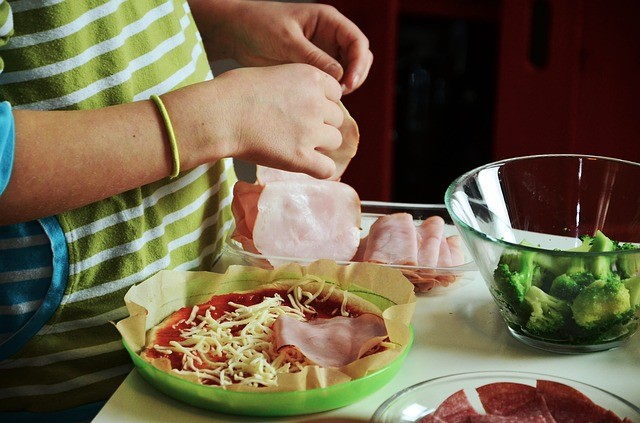Teaching your child to cook is great for their development. They learn a lifelong skill that keeps them from becoming dependent on takeout (expensive!) and frozen foods (gross!). It instills patience while they are waiting for their cake to bake or for the soup to simmer. They grow more confident as they learn to master new dishes and skills. Cooking as a family is also a great opportunity for bonding, since it gives you plenty of time to talk to each other and learn about one another. Your child will cherish the memories you make together in the kitchen.
Of course, the kitchen can be quite dangerous. From contamination to cutlery, it can be a dangerous place, so there are various safety precautions you will need to teach your child.
Back to the Basics
Before you ever break an egg, make sure your child is briefed on the kitchen safety rules we often take for granted. While you may wash your hands without thinking twice, your child needs to know why we do it and when it is necessary. Help your child wash his or her hands before you cook, after handling raw ingredients, and in the event they touch something unsanitary during the cooking process.
You will also need to explain to your child about the dangers of cross-contamination and how bacteria and other harmful microbes can cause foodborne illness. Always separate raw food from cooked food and wash anything that raw food touches. Thoroughly wash fruits and vegetables and keep uncooked foods away from those that will not be cooked, such as salad greens.
Dress for the Occasion
While you should make sure your child is properly attired when working in the kitchen, it's also important to lead by example. If you have long hair, tie it back. Always wear shoes in the kitchen to protect your feet from burns or falling objects that can break the skin. Avoid loose clothing, and remove any jewelry you normally wear. Basically, you want to dress comfortably but without extra appendages that could get caught, stuck, or fall in the food.
Fire!
Many home fires begin in the kitchen, so make sure your child knows how to put one out before a small flare turns into a devastating problem. Teach them to call you or another adult immediately in case of fire. Their first instinct may be to throw water on the fire, but that can be a big mistake; instead, you should always have baking soda on hand to smother flames. If there is a fire in a pan, remove oxygen from the fire by putting a lid on it. Your child shouldn't have to do any of this-- taking care of dangerous flames is your job. However, it's still important to tell them how to handle a fire in the kitchen so they have the knowledge instilled in them and they can recall it once they are grown.
Know about Knives
Knife safety is one of the most important kitchen lessons for everybody, not just children. Show your child how to properly pass a knife to another person and how to place them in a dishwasher. When they are old enough to chop ingredients on their own, always use a sharp knife. Dull knives are more likely to slip and injure. Monitor their knife use until they are comfortable enough to do it on their own.
Cooking with your child is an incredibly rewarding experience for you both. However, since the kitchen can be dangerous, you need to instill safety lessons as soon as possible. Go over the dangers of cross-contamination and foodborne illness. Lead by example by dressing in a fashion that reduces accidents. Teach them about fire safety, but put out the flames yourself. Finally, take your time when teaching them to use knives, and monitor them to make sure they don't injure themselves. These little lessons will help your child grow confident in the kitchen as they learn a healthy skill for life.
Photo via Pixabay

